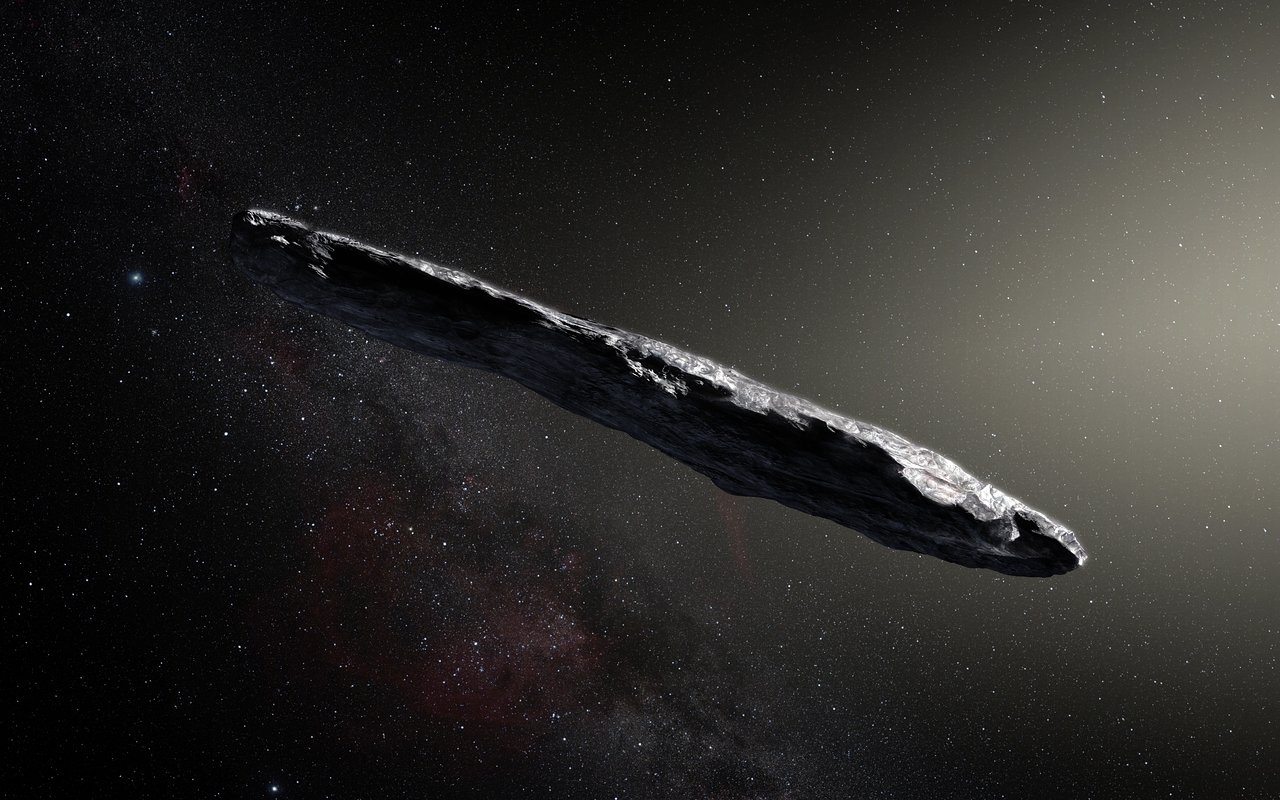
There may be yet another future use for SpaceX's huge Mars-colonization rocket.
That rocket, called the BFR, could launch a probe toward 'Oumuamua, the interstellar asteroid that zoomed past Earth last month, a new study suggests.
The 1,300-foot-long (400 meters) 'Oumuamua is currently speeding away from us at about 58,160 mph (93,600 km/h, or 26 km/s). That's far faster than any spacecraft has ever traveled upon escaping Earth (though some have gone faster as they approached big bodies, such as the sun). But a mission employing the in-development BFR, with speed-boosting flybys of Jupiter and the sun, could theoretically chase 'Oumuamua down, the study said. ['Oumuamua: An Interstellar Visitor Explained in Photos]
This potential architecture is based on concepts drawn up by researchers at the Keck Institute for Space Studies (KISS) and NASA's Jet Propulsion Laboratory (JPL) in California, the study's authors noted.
"The KISS Interstellar Medium study computed that a hyperbolic excess velocity of 70 km/s was possible via this technique, a value which achieves an intercept at about 85 AU in 2039 for a 2025 launch," the authors wrote in the study, one version of which was published on the site Centauri Dreams. (AU is short for "astronomical unit," the distance from Earth to the sun, which is about 93 million miles, or 150 million km. And "hyperbolic excess velocity" just refers to the spacecraft's speed.)
"More-modest figures can still fulfill the mission, such as 40 km/s with an intercept at 155 AU in 2051," the authors added. "With the high approach speed, a hyper-velocity impactor to produce a gas 'puff' to sample with a mass spectrometer could be the serious option to get in-situ data."
To be clear: The KISS and JPL concepts don't deal specifically with 'Oumuamua or the BFR. Those two ideas were devised before 'Oumuamua was discovered, and before SpaceX founder and CEO Elon Musk unveiled the company's latest thinking about the BFR — a point stressed by KISS researchers recently.
Get the Space.com Newsletter
Breaking space news, the latest updates on rocket launches, skywatching events and more!
"KISS did convene a program to study possibilities for future missions to reach the interstellar medium outside the solar system, but that study took place before the discovery of 'Oumuamua and is not applicable to that object," the researchers wrote in a statement about the new study.
An 'Oumuamua mission would really round out the reusable BFR's portfolio. SpaceX already envisions using the giant rocket — along with its paired spaceship — for all manner of tasks, including launching satellites, carrying people on superfast point-to-point journeys around the globe and cleaning up space junk.
But the BFR is not the only option for an 'Oumuamua mission, the study authors wrote. Tiny, laser-propelled sail craft, like the ones the $100 million Breakthrough Starshot project aims to launch to other star systems, could do the job as well. (But a 2025 launch date for a sail-craft swarm is unrealistic; the Starshot team has estimated the probes may be ready for prime time in 20 years or so if everything goes well.)
"An important result of our analysis is that the value of a laser-beaming infrastructure from the Breakthrough Initiatives' Project Starshot would be the flexibility to react quickly to future unexpected events, such as sending a swarm of probes to the next object like 1I/'Oumuamua," the new study said. (The "1I" in front of 'Oumuamua references the object's official scientific designation: 1I/2017 U1.)
"With such an infrastructure in place today, intercept missions could have reached 1I/'Oumuamua within a year," they added.
Even if an 'Oumuamua mission never comes to pass, astronomers could still get an up-close look at a visitor from another solar system in the not-too-distant future: Such interstellar interlopers may zoom through the inner solar system as often as every year or so, scientists have said. (But spotting them appears to be a tall order, given that 'Oumuamua is the first one we've ever identified.)
The new study was conducted by researchers with Project Lyra, which aims to assess the feasibility of a mission to rendezvous with or fly by 'Oumuamua. You can read the short version of the study on Centauri Dreams or the more detailed one on the online preprint site arXiv.org.
Editor's Note: This story was updated on Dec. 12 to incorporate the statement by the KISS research team.
Follow Mike Wall on Twitter @michaeldwall and Google+. Follow us @Spacedotcom, Facebook or Google+. Originally published on Space.com.
Join our Space Forums to keep talking space on the latest missions, night sky and more! And if you have a news tip, correction or comment, let us know at: community@space.com.

Michael Wall is a Senior Space Writer with Space.com and joined the team in 2010. He primarily covers exoplanets, spaceflight and military space, but has been known to dabble in the space art beat. His book about the search for alien life, "Out There," was published on Nov. 13, 2018. Before becoming a science writer, Michael worked as a herpetologist and wildlife biologist. He has a Ph.D. in evolutionary biology from the University of Sydney, Australia, a bachelor's degree from the University of Arizona, and a graduate certificate in science writing from the University of California, Santa Cruz. To find out what his latest project is, you can follow Michael on Twitter.









